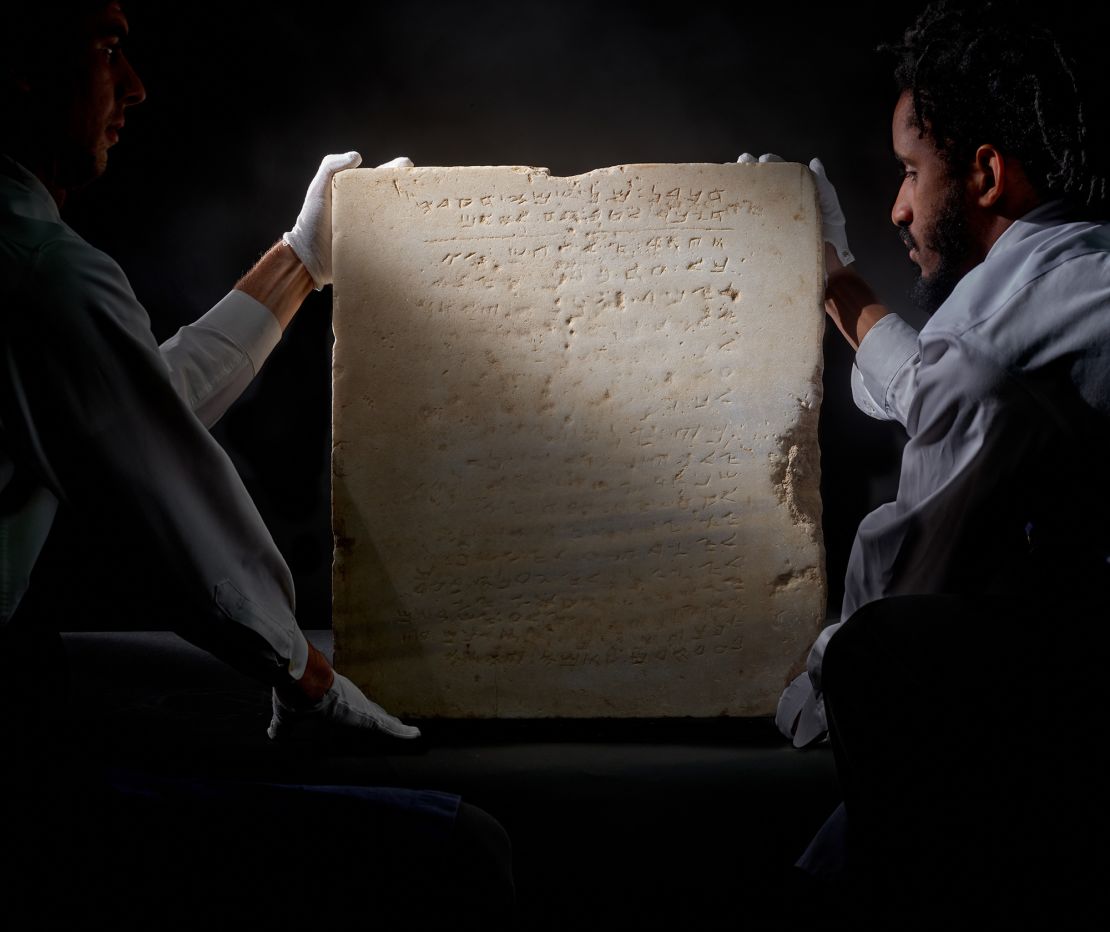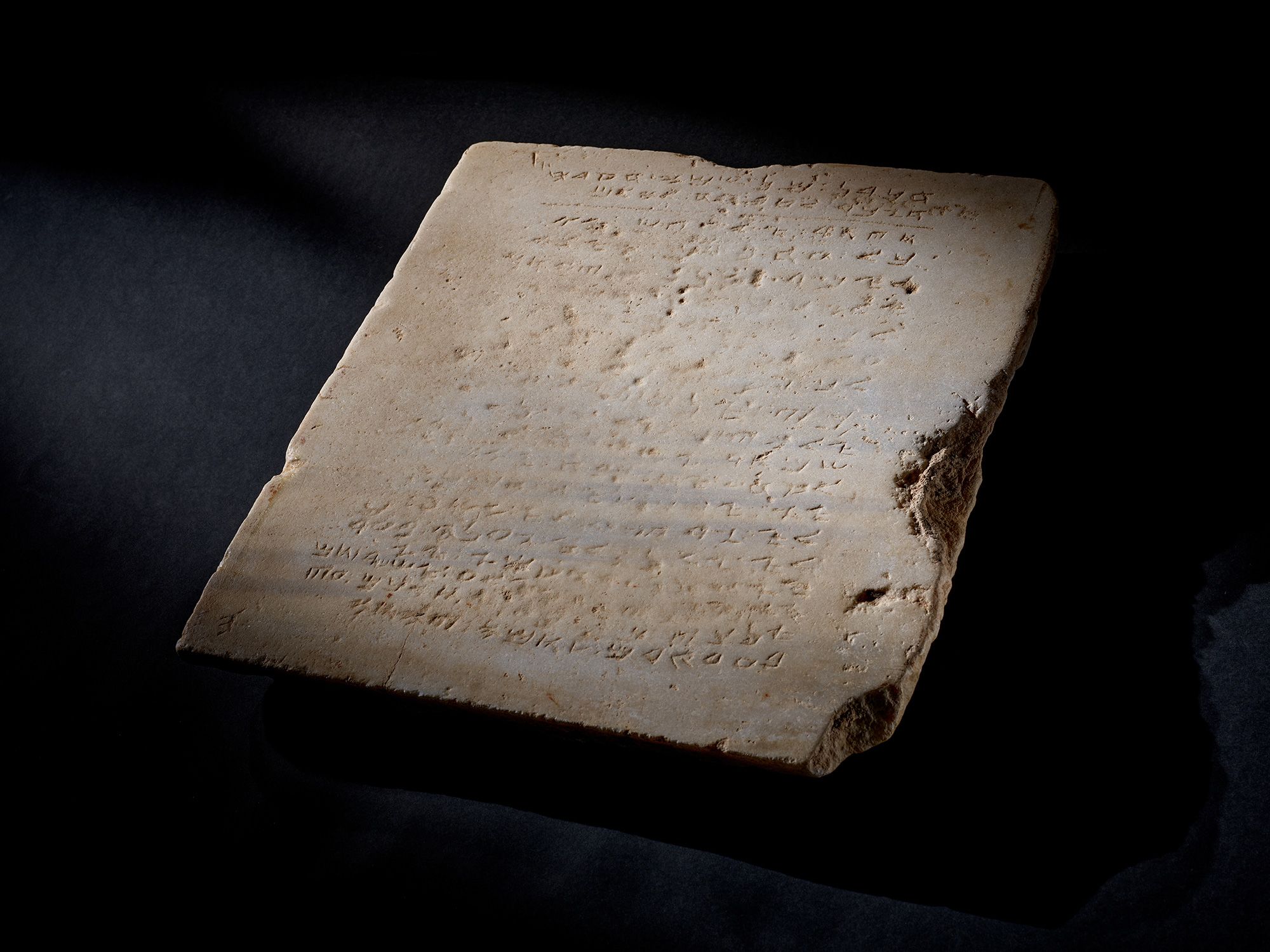The oldest known tablet inscribed with the Ten Commandments from the Old Testament is expected to fetch up to $2 million when it goes up for auction next month.
The stone, which dates back around 1,500 years to the Late Roman-Byzantine era, is a remarkable artefact from the ancient world – but it lay forgotten for hundreds of years.
Weighing in at 115 pounds and standing two feet tall, the stone was discovered in 1913 during excavations for a new railway line in the southern part of what is Israel today.

It was found close to the sites of early synagogues, mosques and churches and was inscribed with the 10 Biblical laws in Paleo-Hebrew script. Even so, the significance of the find was not fully appreciated and the stone went on to be used as paving outside someone’s house for three decades. The inscription was placed face upward and the stone was exposed to heavy foot traffic.
Fortunately, the slab’s historic importance was eventually recognized and preserved.
According to a press statement sent to CNN by Sotheby’s, which will auction the tablet in New York next month, the stone was sold to a scholar in 1943. This unnamed individual “recognized it as an important Samaritan Decalogue featuring the divine precepts central to many faiths, one that may have originally been displayed in a synagogue or a private dwelling,” the statement said.
Samaritanism is an ancient, monotheistic religion based on the first five books of the Old Testament. Though related to Judaism, Samaritanism has Mount Gerizim – in the modern-day West Bank – as the dwelling place of Jehovah, rather than Mount Zion.
Wherever the tablet was originally situated was likely to have been destroyed by either the Roman invasions of 400-600 CE or as a result of the Crusades in the late 11th century, Sotheby’s explained.
In a short video clip about the sale, the auction house describes the Ten Commandments in the Book of Exodus as the “cornerstone of law and morality” and the “founding text of Western civilization.”
The stone features 20 lines of text, which closely follow the verses from the Bible, common to both Jewish and Christian traditions. However, only nine of the 10 commandments from Exodus are included, the missing one being: “Thou shalt not take the name of the Lord in vain.” In its place is a new directive to worship on Mount Gerizim.
Richard Austin, Sotheby’s global head of books and manuscripts, said in the press statement: “This remarkable tablet is not only a vastly important historic artifact, but a tangible link to the beliefs that helped shape Western civilization. To encounter this shared piece of cultural heritage is to journey through millennia and connect with cultures and faiths told through one of humanity’s earliest and most enduring moral codes.”
The auction will take place on December 18 but the tablet will be available to view at the auctioneer’s New York showroom from December 5.
Last year, a Hebrew Bible more than 1,000 years old was sold for $38.1 million at Sotheby’s in New York. The Codex Sassoon, dating from the late 9th or early 10th century, was described as “one of the most important and singular texts in human history.”




